I present an interview I made for the Japanese magazine Scale Aviation with the founders of Arma Hobby. The interview was published in issue 5/22 of our magazine and is divided into five thematic groups.
Basic history & information of Arma Hobby
-
On the Arma Hobby website, it is said that Mr. Wojtek and Mr. Marcin met in a modelling club in the mid-’90s. Could you tell us a little more about this? What modelling club was it, why did you decide to join the club, and what was each other’s first impression?
Marcin Ciepierski: I’ve been interested in model-making ever since I was a kid. I was drawn in by my uncle, who used to build cardboard models. Myself, I took up modelling as a hobby at the beginning of the 1990s, making Matchbox and Italeri kits. When I was 12 years old, in sixth form (1995), I wheedled my parents into allowing me to join a modelling club in central Warsaw. It was there that I met Wojtek, who was working as a volunteer instructor. My first classes with Wojtek – I remember this clearly – concerned the Pacific War, and since I was already interested in the topic, I was thrilled to be able to develop my knowledge. I really enjoyed the historical backdrop to model-making that Wojtek gave me, and I must say that it really inspired me. To me, the modelling club was something adultlike. There were quite a few older boys, they talked on serious subjects, and they had considerable historical knowledge. Add to this the excellent classes which we had on the basics of model-making.
Wojtek Bułhak: We would meet at the “Śmigiełko” [“Propeller”] club at the Youth Palace in Warsaw. The club itself was well known thanks to one of the instructors, Waldemar Salach, who in the 1970s wrote articles popularizing plastic model-making and had them published in various aviation and modelling magazines. Since I was interested in aviation, my parents signed me up for the classes. My first impression, however, was a disappointment, as plastic kits were unavailable and we made wooden flying models instead. This changed after two or so years, and the model-making classes were revived.
The Youth Palace was an enormous building intended for extraschool activities, typical of Communist countries. There were programmes that you had to implement. Our programme covered training in modelling techniques and the history of aviation/military science. In the 1990s, I worked there on a voluntary basis, while later, when W. Salach retired, I was appointed instructor and had my own classes. It was thanks to Mr. Salach’s encouragement that in 1998 I took up a job with Mirage Hobby.
-
How did you both come to work for Mirage Hobby, Adalbertus, and Attack Squadron? Could you tell us about your work experience at each company?
Marcin: Wojtek started working for Mirage Hobby earlier. When I was in secondary school, I would occasionally write articles for the magazine which Mirage published. During the holidays before I went to university, I worked for Mirage on two model designs. I spent many hours observing how a friend from the office designed a plastic model. It was then that I “caught the bug” and got to know the basics of 3D modelling. When I was studying industrial design, my interests developed still further. This coincided with the appearance of 3D printing. Meanwhile Wojtek had set up his own company, and we decided to try out this new technology under its aegis. That’s how the Attack Squadron brand was born. We were encouraged by our initial attempts, and so in 2013 we established Arma Hobby. In the beginning, we planned to only make resin models and accessories, however the market drew us in and forced us to develop.
Wojtek: While working at Mirage Hobby, I learned the basics of sales and model design. After a few years I left them to start my own company, Adalbertus, because I had grown fascinated with miniature figures. I produced toy soldiers and accessories for armoured models for a few years, with lesser or greater success. The breakthrough was the introduction of aviation models under the Attack Squadron brand. From there, everything just took off.
-
After working for three companies, what motivated you two to create your own company, Arma Hobby? What is the origin story of Arma Hobby?
Marcin: Arma Hobby brought about the formalization of processes which had been occurring within Adalbertus and Attack Squadron. The first resin models were an excellent experience, however we were left feeling unsatisfied. Resin is more suited to short production runs, but we were drawn to mainstream topics. This in any case explains our attempts with the Bearcat and Spitfire PR XI. Somewhere along the way we came to the conclusion that design work on resin models is similar to that on plastic models. Thus we decided to have a go with plastics. During the first stage, we were assisted by the doyen of the Polish model-making world, Mr Mirosław Miarka, who has designed numerous Polish and European models. It was with his help that we got through our first project, the TS-11 Iskra. We had the moulds for the model made in China. Since we wanted to ensure better control over the process and at the same time give ourselves the opportunity of improving our technical knowledge, we finally decided to find a mould producer in Poland. This was an excellent decision, because it allowed us to learn and improve quality from project to project.
We cannot also help but mention the graphical design of our kits. Everything – the logo, boxes and colouring – is the work of my wife, Paulina, who is a professional graphical artist. People frequently tell us that are boxes are great, and that they find them appealing. You can read more about how our logo came into being and what the colours mean on our blog:
-
How big is your company? (Number of workers)
Marcin: If you count Wojtek and me, there are five of us, plus a few regular collaborators.
Wojtek: Technically five people employed on a full time basis, two part-time, and a few collaborators.
Note: We expanded our team to nine empleyes since interview made.
-
Could you introduce us to some other key members of Arma Hobby?
Marcin: The most important is Michał Pawłowski, he’s been with us since the beginning – in fact, he worked with Wojtek at the inception of Attack Squadron. He’s in charge of the whole sales system.
Zbyszek Malicki is responsible for graphics and – quite often – the documentation. He’s a model-maker himself and a fan of Japanese aviation. I met Zbyszek on a model-making forum, and also at the IPMS club in Warsaw.
Maciek Wroński is our 3D designer. He worked with us for a while at Attack Squadron. He returned to us a year ago to design plastic models. We’ve known Maciek since we were students at the faculty of industrial design.
Wojtek: Two other colleagues are employed on a part-time basis: Grzegorz Mazurowski, who supports us as an editor, and Maciek Ruciński, who handles orders and production. Some important people are supporting us from behind scene: Piotr Zalewski, our business advisor, Grzegorz Cieliszak, Dominik Sędziak both with research and Maciek Zakrzewski is our professional translator.
„Ta robota jest ciekawa” – wywiad z Maciejem „Wroną” Wrońskim, projektantem 3D z Arma Hobby
„Malowania japońskie to temat dość trudny” – wywiad ze Zbyszkiem Malickim, grafikiem z Arma Hobby
-
Why did you name your company “Arma Hobby”?
Wojtek: We wanted a name that would conjoin a passion for military technology with hobbyism. Ideally, it was to be simple and easy to understand in different languages. Thus we adopted “Arma”, which means “arms” or “weapon” in Latin.
-
While many model-kit companies outsource designing, moulding, and injecting abroad (mainly in Asia), Arma Hobby produces their kit 100% in Poland. Could you tell me the difficulties of doing everything yourself and why you chose this approach?
Marcin: Maciek and I are fully responsible for design work. I just could not imagine outsourcing this stage. I love doing it. It’s important that our designs are in line with how I approach modelling, reflecting both how I pursue the hobby and the experiences that I have gathered as a designer. That’s why Maciek has fitted in so well into our team. He has a special type of mind, one which understands the functioning of solids in space and knows how mechanical devices work. Importantly, he is skilled not only at drawing in 3D, but also – and perhaps first and foremost – at designing products. I hope that his first design following his return will take your fancy.
Wojtek: Obviously, it costs more to make moulds and manufacture models in Poland than in China. It was important for us to learn the technology and assure quality. This was easiest to achieve through direct contacts with the contractor. In Poland, production is more resilient to international turbulences, and this is something that we understood years ago. While the world is now experiencing “supply chain disruption”, we are to a considerable extent immune to the problem. An important element is patriotism and supporting the national economy.
-
If my understanding is correct, Arma Hobby started as an aftermarket parts company. It then led to F8F-1 and PZL P.1 (resin kits) and eventually injection-plastic kits. Could you briefly explain the history of Arma Hobby?
Marcin: I’ve already hinted at this previously, and so I’ll now focus on plastic kit production. Our first plastic model – the Iskra (a Polish trainer jet) – was made in China. For me, the fact that we were unable to inspect the work performed by the engineer was a considerable problem. I just couldn’t learn model manufacturing technology quickly enough! And so we decided to find a mould manufacturer in Poland. Our first Polish-produced model was the PZL P.7a. We weren’t fully satisfied with it either, however we immediately knew what to correct and how. The Fokker was confirmation that our corrections were proceeding in the right direction. This gave us the opportunity of further developing our experience with the PZL P.11c, and then preparing for the Hurricane series. Each successive kit allowed us to overcome fresh challenges concerning a multitude of issues, such as a greater number of parts or a greater quantity of surface details. I use successive projects as test beds for new solutions, which I then introduce on a wider scale in other models.
Arma Hobby kits
-
In your opinion, what makes Arma Hobby kits unique compared to other manufacturers’ kits?
Wojtek: We strive to find a balance between the number of details and ease of model construction. Our guiding principle is to minimize problems relating to the building of models. The most important thing is to get the body of the aircraft right, then properly think out the division into parts, and finally ensure that the details are suited to the scale of the kit.
We think that many companies are compromising on the model body and trying to make an impression with an excessive number of details, which may look grotesque – especially in small scale kits.
-
Can you give us three reasons to be excited about the upcoming 1/72 P-51B/C Mustang kit?
Marcin: Simple: the best reproduction of the shape of the body of the Mustang B/C versions on any scale, inclusion of the majority of variants of the aircraft, and the best details.
Wojtek: This is a very popular aeroplane. But there is no kit on the market developed in accordance with modern standards regarding the shape of the airframe and details. Straight out of the box, the model allows you to build a replica of any variant of the plane, without having to convert or use additional accessories. All you have to do is select a paint scheme from the kit or use one of your spare decal sets, which modellers usually have aplenty.
-
CAD images of the 1/72 P-51 are rich in detail. Would this be indicating a possible 1/48 upscaled version of the Mustang?
Marcin: I think this is a natural path. Personally, I would very much like to rescale not only the Mustang.
Wojtek: I think this’ll be unavoidable, although 1/72 is our favourite scale. Modellers keep on inquiring about 1/48.
-
In recent years, Arma Hobby has released Yak-1, PZL P.11, Hurricane, and Wildcat. How do you usually select the subject of a new kit?
Marcin: This all comes down to a number of factors. Polish builds, such as the Iskra and PZL, are an obvious choice for us, as they were ideal for learning the technology and readily accepted on the local market. Whereas the Wildcat – in addition to market-related aspects – is one of my favourite aircraft. The Yak-1B had an excellent body of documentation, and this greatly facilitated design work and thereby allowed us to quickly add another well-known fighter from the Second World War. The Hurricane series was an obvious choice due to weak market competition and the aeroplane’s renown. Although the Fokker, Hurricane and Yak are all foreign aircraft, they were important for the history of Polish aviation.
-
Producing parts with fine and crisp details and achieving a good fit between parts is very difficult for many model-kit manufacturers. Even though Arma Hobby is a relatively new company, your kits are easy to build, with excellent surface detail. How were you able to achieve this so quickly?
Marcin: I think that this stems from a number of factors. The first would certainly be the development path – outlined above – in which we opted for close co-operation with engineers in the tool shop. In consequence, my designs embody the lessons learned during the production of previous kits. Equally important is that I am both a modeller and a design engineer. And I always give due consideration to the fine details that modellers enjoy simply because modelling has been my hobby since childhood. Buildability and ideas for the division into parts follow from our experience of design engineering. I think that the greatest secret to success is that to date each and every project has passed through my hands – the hands of designer, modeller, and company proprietor.
-
What is the motto/slogan of the company? What makes Arma Hobby stand out amongst other competing model-kit manufacturers?
Wojtek: We continue to work on verbalizing our concept of the model for modellers.
-
Could you give us a brief rundown of how a typical development process of a new kit proceeds?
Wojtek: In the main, our work together consists in talking. During these discussions we arrive at an idea of a model that is in demand and would be suitably complicated – in line with our current capabilities. Next we gather the documentation, preferably factory construction plans. An interesting source of inspiration is the Japanese website http://soyuyo.main.jp/. Marcin gathers hundreds of photographs, and these make it possible to capture the shape of the model body. Over the next few months, we painstakingly create a 3D model, in the meantime discussing versions and the division into parts, and selecting painting scheme variants. When the 3D model is ready, Marcin divides the parts into frames. We then pass on the design to the tool shop. The engineer programmes the machine tool, which takes two months. Next we proceed to electrodrilling and process the mould. The artist paints the box art, while Zbyszek makes the colour profiles, decal design, box and instruction. About a month before putting the model on the market, we start to promote it on our blog and on social media. At the same time we perform injection moulding tests and correct the mould. When everything is ready, we commence sales and shipment.
Future of Arma Hobby
-
Do you have something exciting planned after the 1/72 P-51 Mustang? If so, could you possibly give us some hints?
Marcin: The spring will be a beautiful period for Japanese modellers. You can expect an aircraft with the Hinomaru very soon. Our next project will be a Hurricane Mk IIc on a scale of 1/48, which is planned for June of this year.
-
How do you feel about Japanese subjects? Is there any possibility of a Japanese Aircraft kit in the future?
Wojtek: We have already replied to this question in part. We are planning at least three Japanese projects over the next few years
-
Arma Hobby has proven to be an excellent scale model kit manufacturer. How do you see yourself in 5 or 10 years? What is your next goal in the upcoming decade as a model kit manufacturer? What kind of challenge would you like to tackle?
Marcin: I think that the natural development will be successive models of single-engined aeroplanes on a scale of 1/72.
This will be followed by moving the projects to larger scales. What I consider to be the greatest challenge for the future is our potential involvement in more complex projects. For example multi-engined aircraft or jet aircraft.
Wojtek: We want to manufacture world-class plastic models, and offer the majority of popular aeroplane types. Our challenge will be to maintain a high level of quality and keep up the tempo of putting new kits on the market.
Scale modelling in Poland
-
In our previous interview with Special Hobby, we heard very interesting stories about scale modelling culture in a Socialist country. Since Poland was in a similar situation under the PZPR until 1989, could you tell us some brief history of the plastic modelling hobby during the PRL era, and how it has changed since then?
Marcin: My perspective is more focused on the 1990s. I was 7 years old when the decade began, and the majority of foreign models gradually became available. I think that contemporary Polish modelling circles quickly caught up with their Western counterparts. And the appearance of the internet only speeded things up. The hobby itself changed, however, from a popular hobby for kids to one for fully involved men in their thirties who knew exactly what they wanted. I think that letting go of the kids was an act of negligence. I myself went along the entire path, starting as a child, and I think that this hobby is an excellent way of developing manual, technical and intellectual skills.
Wojtek: I recently wrote a post on our blog concerning inspiration during the period of Communism, describing how I waited for my dream model of the Mustang in the “economy of shortages”. Link:
The few kits that were available, mainly Polish, Czechoslovak and East German, inspired and awed young modellers. The problem was getting the proper tools and modelling paints. I remember how we bought Wilbra leather paints (for shoes) and used them to paint our models. The first harbinger of change was the appearance of Matchbox – and thereafter ESCI – kits in the second half of the 1980s. In the 1990s, supply improved, however the boom really started in the 2000s, specifically thanks to the internet.
-
For unknown reasons, many Japanese people think that Polish people are very pro-Japanese. Is this true? If so, are Japanese aircraft subjects also popular amongst the Polish scale modelling community?
Marcin: Yes, without a doubt. Because of its physical distance and exotic culture, we view Japan as exceptionally intriguing. And Polish modellers are definitely impressed by what Japanese modelling companies have achieved in the world. Further, Japan played an important part in the aviation history of the Second World War and the post-war period. I myself have a list of a dozen or so Japanese aircraft models to build.
Wojtek: The history of Poland does not stretch as far back as that of Japan, even though it does span more than 1,000 years. Polish-Japanese relations started during the Meiji era. At the time, both countries were trying to shake off the yoke of foreign influence. Poland was divided between Russia, Prussia and Austria-Hungary. My great-great-grandfather took part in the Russo-Japanese War of 1905 as a doctor in the rank of Colonel in the Russian Army. After being taken prisoner, he was treated very well and allowed to live on the islands with a Japanese family. To this day we have in our possession the keepsakes that he brought back with him. The fathers of Polish independence, Józef Piłsudski and Roman Dmowski, worked hard to establish diplomatic contacts in Japan at the time. Piłsudski’s brother, Bronisław, was a scholar of Ainu culture, and his descendants live in Japan to the present day.
In 1926, a famous Polish pilot, Bolesław Orliński, flew to Tokyo on a Breguet XIX. During the Second World War, the Polish commander of No. 303 Squadron RAF and an ace of the Battle of Britain, Witold Urbanowicz, fought the Imperial Japanese Army while serving with the “Flying Tigers”. In German-occupied Poland, Japanese diplomats established cordial co-operation with the Polish underground state. During the period of Communism (1944–1989), contacts between our two countries were limited, however the achievements of the Japanese were keenly observed. In the 1970s, when I was a child, the Polish plan of industrialization was inspired by the economic development achieved by Japan. For all of us attaining the level of quality of Japanese products – including plastic models – is a significant goal.
The music of the great Polish composer, Fryderyk Chopin, is popular in Japan, and many pianists from your country perform in Poland. They are always greeted with great warmth by audiences. Japanese history, cuisine, culture and pop culture have many aficionados in our country.
Wojtek and Marcin in the Arma Hobby office
.
Others
-
Since Mr. Wojtek and Mr. Marcin has been working together for so long, I can’t help but assume that there is a special bond between the two. How would you describe each other, and how has he helped you through your life?
Marcin: I have known Wojtek ever since I was 12. Initially, I looked to him as an authority because he was an instructor at the modelling club. Over time, our relationship evened out. Although we’ve known each other for so long, I keep on being surprised by the depth of his historical knowledge, his excellent memory, and innate optimism and calmness. His character traits harmonize excellently with mine, and thus our co-operation generates an added value.
Wojtek: We make an ideal match in terms of our temperaments and approaches to life. This allows us to remain fully focused on developing our offer.
-
Roughly 10 years have passed since the founding of Arma Hobby. Could you list two biggest challenges/obstacles you faced, and how you overcame them?
Marcin: The greatest challenge was shifting from resin to plastic manufacture in 2017. At the time, we sold all our resin designs and laid off everyone except Michał. We decided that there was no other way. Years later, I’m very happy with the decision.
Wojtek: I think that the greatest challenge was and continues to be assuring the appropriate quality of designs and optimizing their implementation. We haven’t cut any corners here by using a “short-run” technology, instead jumping off at the deep end. And thus, as Marcin mentioned, we had the courage to give up anything that did not bring us near to our goal.
-
Do you have anything you want to add? A message to the Japanese scale modelling community?
Marcin: As many of our compatriots, we are deeply impressed by Japanese model-making. I am referring here to both companies that manufacture very high quality kits and modellers who build their replicas with immense care, indeed turning them into works of art.
Wojtek: I am very curious Japanese reception of Arma Hobby kits. Please visit our blog and Facebook, and let us know your opinions and needs. We would be happy to post photos and articles with Arma Hobby kits built by you in our media.
Jubilee Anniversary Promotion!
At the beginning of November, Arma Hobby celebrates its tenth anniversary! On this occasion, for modellers, we have prepared a special, jam-packed anniversary model kit – Hurricane IIC “Jubilee” in 1/48 scale.
This is a set with marking schemes from Operation “Jubilee” – the Allied Dieppe landing, with a box filled with a full set of 3D-printed resin accessories. This unique kit is released in a small, limited series for the 10th anniversary of Arma Hobby and will not be reissued!
Promotion lasts from 2nd to 15th November. Other Arma Hobby 1/48 kits have special discounts during this period.
We are preparing an anniversary offer for 1/72 modellers from November 16, please be patient.
Go to Armahobby.com online store and check the Anniversary model kit:
Noah Muranishi is a deputy-chief editor of the "Bi-monthly Scale Aviation" magazine published in Japan. Featuring excellently built aircraft models with unique outside photography taken in-house by the chief editor Ishizuka himself, "Scale Aviation" continues to grow its audience worldwide.
This post is also available in:
 polski
polski





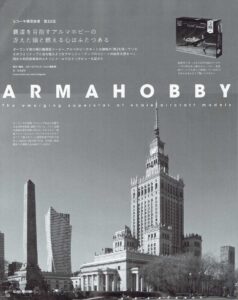


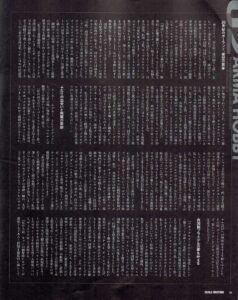

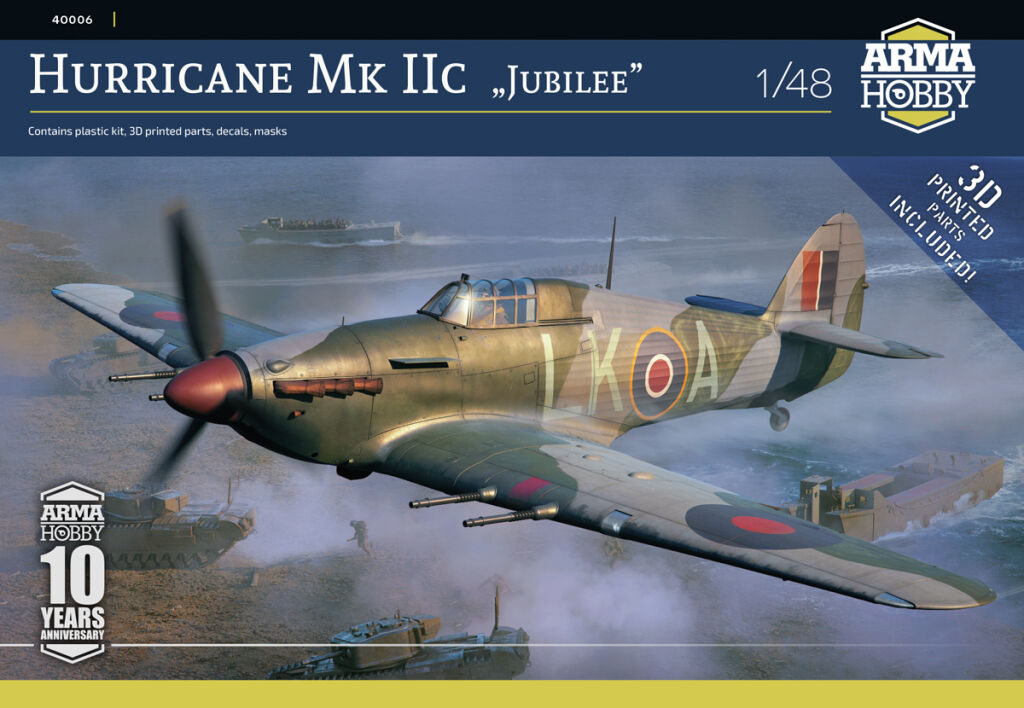
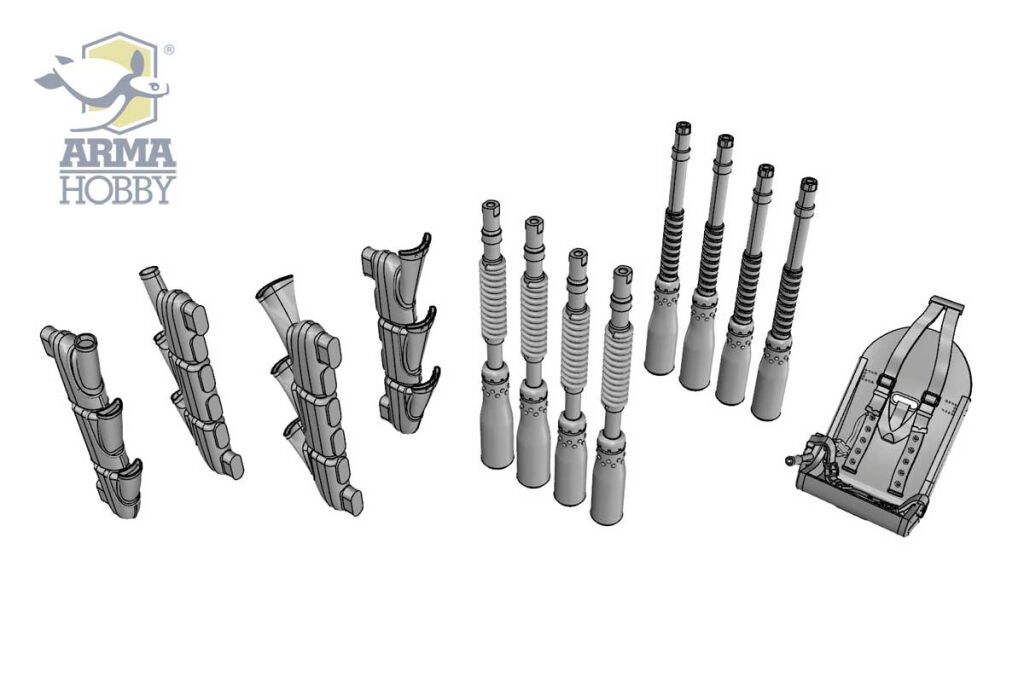
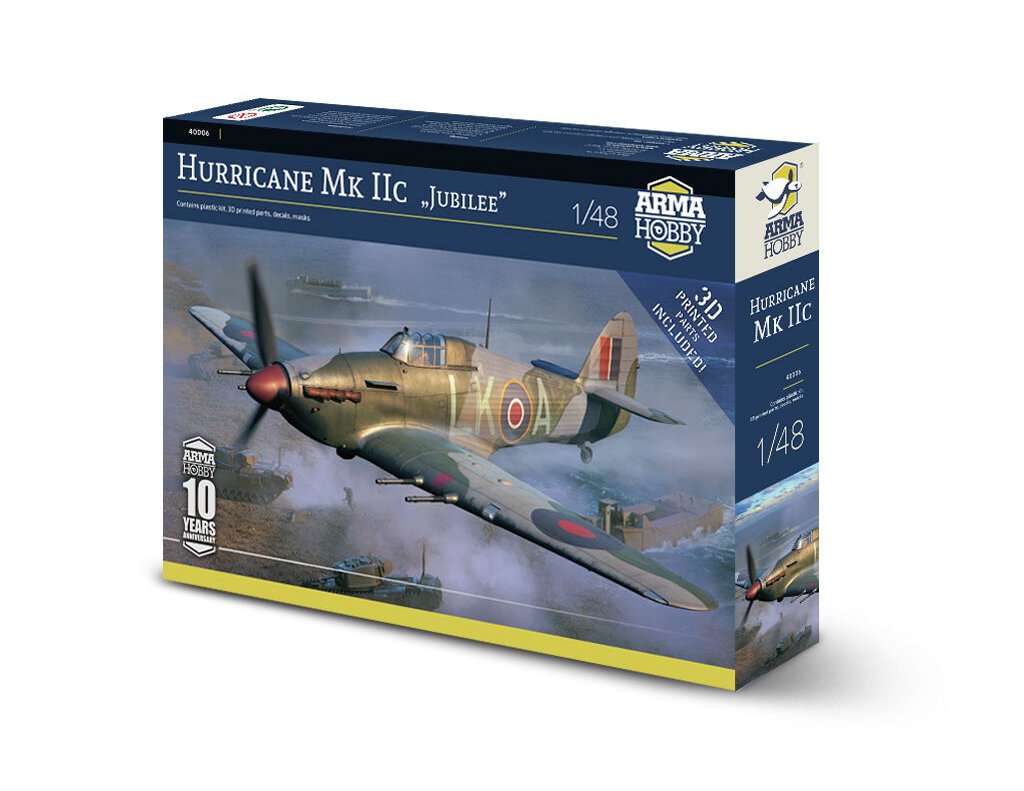
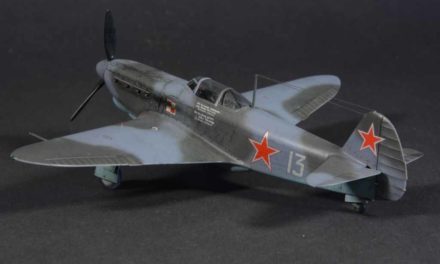
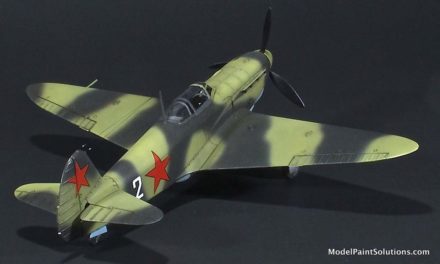

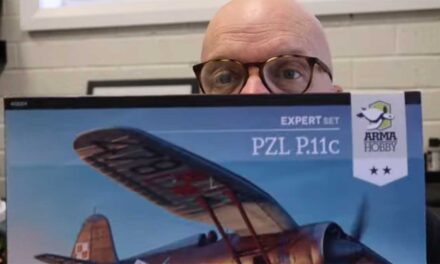
An AMAZING,story that shows what can be done, even under the Soviet system! I look forward to building the Yak-1, and the P-51 as well. I look forward to getting a new newsletter from ArmaHobby each month. To me, Poland is an exotic place and I like to build models of Polish Aircraft. One of my favorite comic book characters is Blackhawk who was a Polish Freedom Fighter Pilot during World War II and beyond.I do hope that You good folks will put out a MiG-21 UM and a MiG-21Bis with Polish markings sometime soon. Keep up the GREAT work! Sincerely, Larry
Liked the article, the background story of Arma is very interesting, and I like the bond modellers have with others, we all seem to have started as young boys fascinated by airplanes. I like that Arma does kits in 1/72 scale, as the trend seems to be towards 1/48 and 1/32 scales, which I find expensive and too large to display all the models I dream about building. I am of Czech/Italian heritage, and I like that I can get excellent kits from Poland, as I am trying to not buy any more from China!